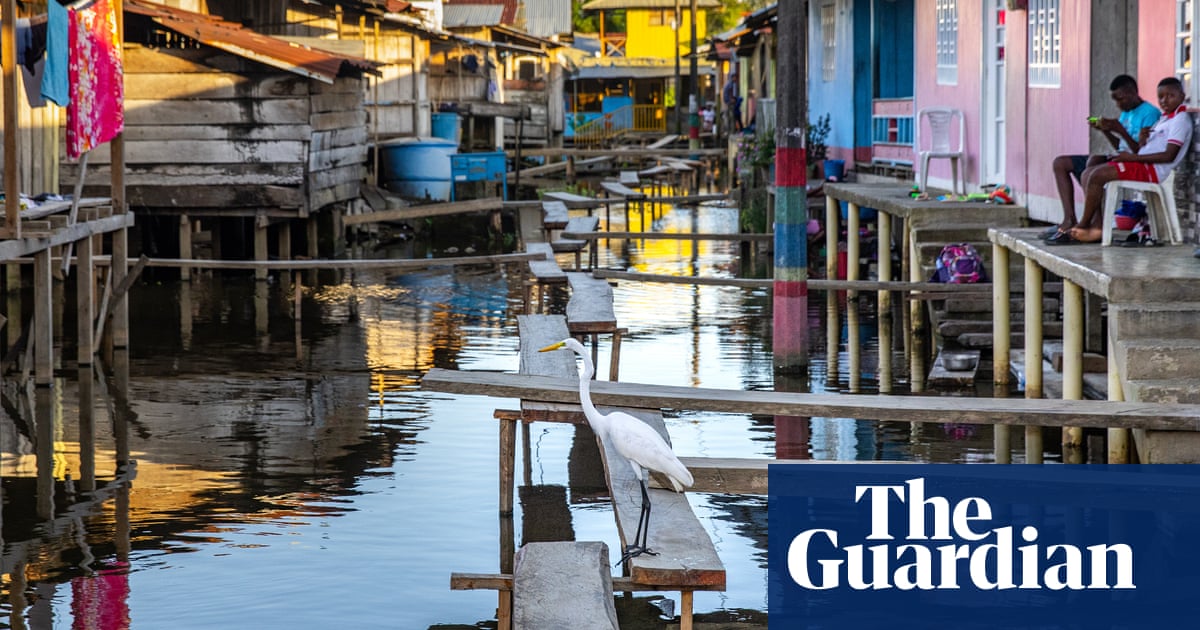Riosucio was established between rivers and swamps. For most of the year, the people of this Colombian municipality live above water and have developed ways to manage the fluctuating river levels. A network of makeshift wooden boards connects the houses in the town, allowing people to move between them.
Despite the resilience of these communities, their increasingly harsh environment is beginning to overcome all the methods and systems designed to tame it, causing crop destruction, hunger and deepening poverty.
A recent studyby theNational Administrative Department of Statistics(Dane) and the Food and Agriculture Organization (FAO) shows that food insecurity increased in Colombia’s rural areas in 2024, despite an overall decrease of 0.6%. Chocó, where Riosucio is situated, experienced the largest increase, from 18.9% in 2023 to 36.3% in 2024.
“Salaquí is the main food pantry of Riosucio, but it is now dying,” says Benjamin Palacios, 76, a subsistence farmer and community leader. “When the river swells, it forces them to run backwards, surrounding them and damaging their land and plantations.”
The Salaquí area in Riosucio comprises 12 Afrodescendant and Indigenous communities, all situated along the banks of the Salaquí River and its tributaries. According to Dane, nearly 40,000 of Riosucio’s 53,000 people live in rural areas, and about 46,000 are Afrodescendant – 71% of the population suffers from multidimensional poverty.
The crisis further intensified last year when the Chocó region was hit by severe flooding. Many communities are now experiencing food insecurity, as people in the Salaquí River basin rely heavily on agriculture. They primarily plant plantain and cassava, both of which are vulnerable to flooding. Although cocoa plantations were also common, they have disappeared due to extreme weather conditions.
“There are times when we only eat once a day or eat the plantain on its own,” says Berta Lozano, a farmer in the Salaquí basin who lives in Riosucio with her nine children.
Since the floods, farmers have been forced to travel long distances from their homes, raising costs and lowering income, as transport is mainly by boat and petrol is expensive. Poor road conditions are yet another obstacle. It is common to see trucks that have become stuck or have overturned while transporting food.
“In November, I lost my plantain production completely. Every time a neighbour told me they had nothing to eat, I’d give them from here. Now, everything is gone,” says Aparicio Vásquez, who had half a hectare with different crops by the side of the river.
Communities attribute changes in weather patterns to the climate crisis and say that producing food has become much more challenging. “Before, the rainy season would begin in April and continue until November. Then it dried up, and we were able to harvest the crop. Now, everything is messed up, and we can’t figure out when is the right time to plant our crops,” he says.
As a result of the food crisis, many residents have left. Vásquez decided to stay. “Here we are subsisting, but if we are forced to leave, it would be harder,” he says. “Where would we go? What would we live from?”
As well as the climate issues, the region has also been severely affected by Colombia’s armed conflict, increasing displacements. The Gaitanist Self-Defence Forces of Colombia (AGC) control local movements in the area, tagging wooden houses with “AGC” to announce their territorial dominance.
The Guardian was granted access to the communities of Regadero and Coco Arenal but was prohibited from visiting a third. Both communities are affected by logs and sediment blocking the Salaquí River and its tributaries, which hinders the transportation of people and goods, occasionally leading to crop losses.
Sign up toGlobal Dispatch
Get a different world view with a roundup of the best news, features and pictures, curated by our global development team
after newsletter promotion
“Here, a 20-metre pole was not enough to reach the ground. Now, the river ranges in depth from 1 to 1.2 metres,” says Jesus Chalá, a representative of the community of Regadero who owned 23 hectares (57 acres) of plantain but has now lost everything.
He says that among the 268 families that once lived in Regadero, only a handful remain. “In 2020, people started leaving. We are rebuilding to return, but it is not easy,” says Chalá, while walking over the remains of his neighbours’ houses.
Mining also exacerbates food insecurity by contaminating water and land.Tests carried out by the University of Córdobaon people in the Atrato River basin revealedthat 90% had unsafe mercury levels.
While mercury contamination is devastating for fish, river sedimentation affects their reproduction, reducing fish populations – another factor contributing to food insecurity. “When I began fishing at 16, with a 150-metre trammel net, I used to catch about 2,550 fish. Today, with a 1,000-metre trammel, you’d be lucky to catch 150 fish. There are even fishing trips that end with zero catch,” says Daniel Palacios Mosquera, legal representative of the artisanal fishers association, Asopescar.
With food crops and fish becoming scarcer, prices have risen, further hurting those who have little. “Fish should be abundant, but they’re difficult to find, and the few we find are very expensive because they’re scarce,” says Evangelina Murillo, who works with the Association of Community Councils and Ethnic-Territorial Organisations of the Lower Atrato, an environmental group.
Last November, Colombia’s president,Gustavo Petro, declared a state of emergency for 12 monthsdue to extreme weather conditions in Chocó, La Guajira and Bogotá, aiming to mitigate the effects of floods and droughts. His government has also implemented the “zero hunger” programme.
Despite that, the recent Dane and FAO reports indicate that these policies were insufficient to prevent food insecurity in the Chocó region. People in Riosucio believe the government programmes are misguided as they have not yet addressed the river issue.
“The only thing that guarantees us a livelihood is our land,” says Juan Bautista, leader of the Coco Arenal community. “Hunger does not wait.”
